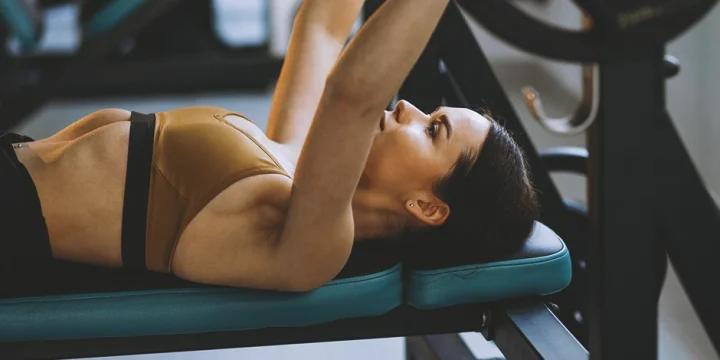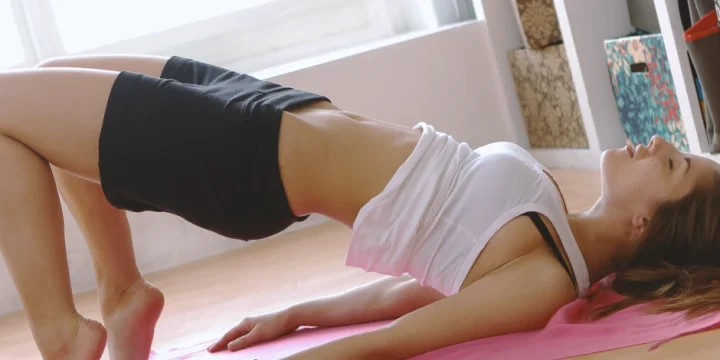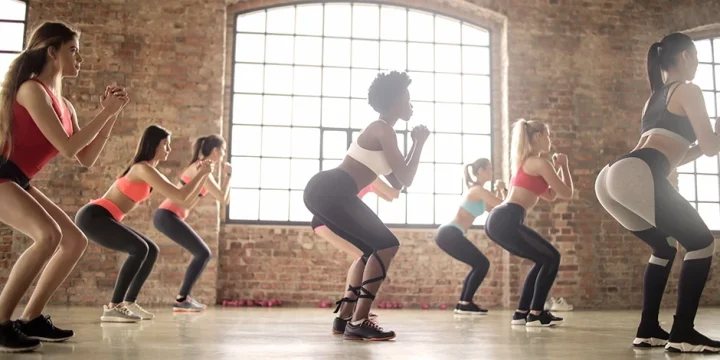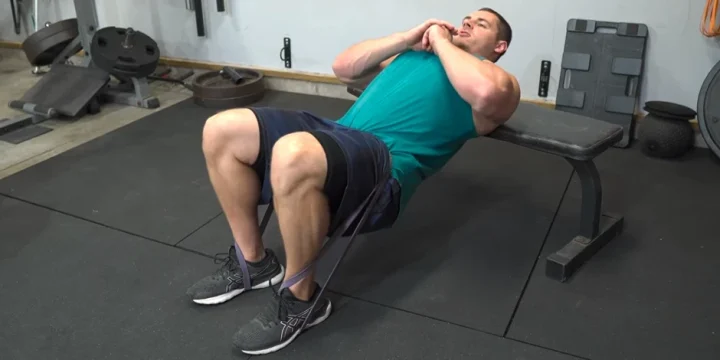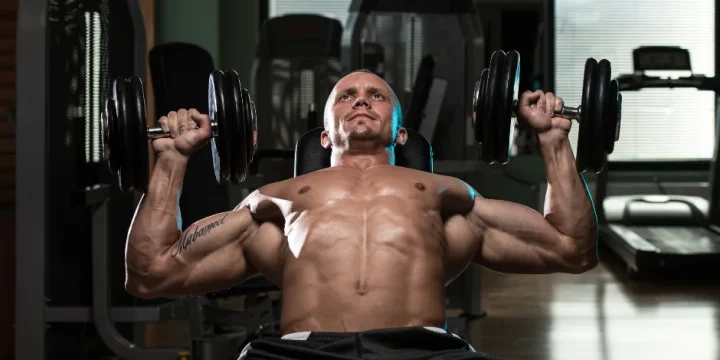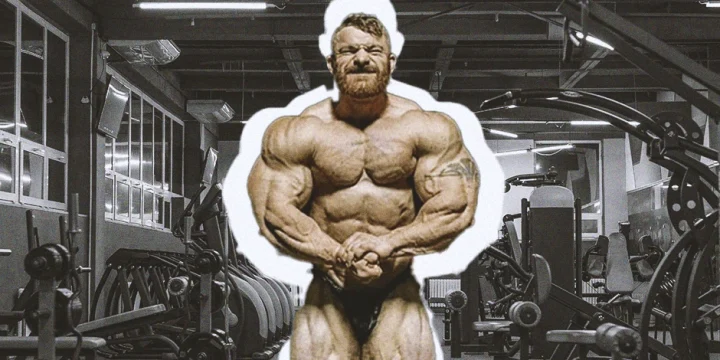As a personal trainer with over a decade of experience, I often receive questions about exercises that target and activate the gluteal muscles for a more defined posterior.
To offer proper guidance, I conducted thorough research and consulted with fellow fitness experts to identify glute-lifting exercises and their proper execution.
This article compiles our findings, providing a comprehensive toolkit for achieving well-sculpted buttocks.
Quick Summary
- The best butt-lifting exercises are single-leg glute bridge, hip thrust, step-ups, jump squats, lateral squat walks, and sumo squats with a dumbbell.
- Targeting gluteal muscles like the gluteus maximus, medius, and minimus is crucial for achieving a toned butt while also improving lower body strength and stability.
- According to a National Institute of Health study, step-up exercises and variations have the highest gluteus maximus muscle activation, followed by bilateral exercises such as deadlifts, hip thrusts, and squats.
-
In my training with clients, I emphasize consistency, progressive overload, and proper form, recommending 2 to 3 times per week of glute exercise sessions with adequate rest for optimal results.
Top 7 Best Butt-Lifting Exercises

Here are the top 7 best glute lifting exercises that our team has found effective to achieve the perfect backside.
1. Single-Leg Glute Bridge
The single-leg glute bridge targets and strengthens the glutes through unilateral hip extension.
Here's how to do it:
- Lie on your back, knees bent, and feet flat.
- Keep your arms relaxed by your sides.
- Extend your right leg straight out, lifting it slightly above the surface.
- Keep your left heel on the ground with the knee bent.
- Engage your core, push through your left foot's heel to lift your hips.
- Keep your lifted leg extended, contracting your glute muscles.
- Hold for a brief pause, focusing on squeezing your glutes.
- Slowly lower your hips to the starting position, maintaining control.
- Repeat 8–12 times. Switch sides and do the same with your right leg.
- Complete 2–3 sets.
2. Hip Thrust
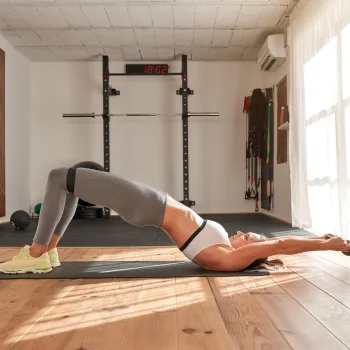
The hip thrust is a powerful exercise focusing on hip extension, particularly effective for glute activation and strength.
Here's how to do it:
- To start, lie on the floor with shoulder blades against a stable surface.
- Bend your knees, place feet flat on the floor, and rest your upper back on the bench.
- Position a barbell across your hip crease, gripping it with hands.
- Adjust the weight based on your fitness level, progressing gradually.
- Drive your heels into the ground and lift your pelvis by squeezing your glutes.
- At the top, your shins should be vertical and knees bent at a 90-degree angle.
- Gently lower the weight and return to the starting position.
- Repeat for 8–12 reps, completing 2–3 sets.
Related: Best Hip Thrust Machine
3. Step-ups
Step-ups involve stepping onto an elevated platform, engaging the lower body muscles and enhancing balance.
Here's how to do it:
- Find a stable bench or step.
- Stand in front of the bench with your feet hip-width apart.
- Lift one foot and place it firmly on the bench.
- Push through your heel to lift your body up, straightening your leg.
- Lower yourself back down, returning your foot to the floor.
- Repeat the process with the other leg.
- Maintain a steady pace and focus on using your buttocks to lift yourself.
- Do 10-15 step-ups on each leg for a good workout.
“It’s a great exercise because you don’t need much equipment to do it.”
- Fiona Scott, Strength & Conditioning Coach
4. Jump Squat
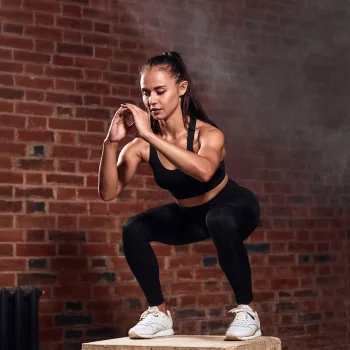
Jump squats combine a squat motion with explosive jumps, promoting lower body power and cardiovascular fitness.
Here's how to do it:
- Standing position with your feet hip width apart.
- Keep you toes pointed slightly outward, and arms at sides.
- Bend knees, engage your core, and lower down into a deep squat.
- Then, explosively jump straight up into the air, extending your legs fully.
- As you land, focus on landing softly by bending your knees and lowering your body back into the squat position. Always keep feet hip width apart.
- Repeat the movement immediately.
- Perform consecutive jump squats for 8–12 repetitions.
5. Lateral Squat Walk
The lateral squat walk is a lateral movement exercise that targets the inner and outer thighs, enhancing hip mobility.
Here's how to do it:
- Stand with feet hip-width apart, knees bent in a half-squat position.
- Optionally, add a resistance band above your knees for added difficulty.
- Shift weight to your right leg, take a wide step to the left.
- Maintain shoulder-width feet and forward-facing toes.
- Avoid bouncing; focus on slow, deliberate steps from side to side.
- While stepping, bring your right leg back to the starting position.
- Repeat for 8-10 steps.
- Perform the same steps in the opposite direction.
- Do 2-3 sets of this exercise.
Related Articles:
6. Sumo Squat With Dumbbell
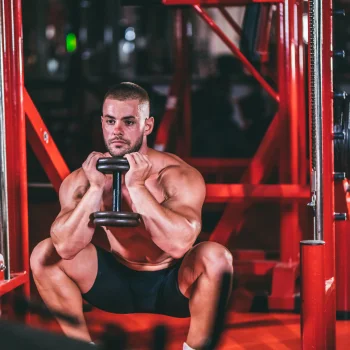
The sumo squat with dumbbell is a variation of the squat, emphasizing the inner thighs and glutes while using dumbbells for added resistance.
Here's how to do it:
- Stand with feet slightly wider than shoulder-width.
- Maintain hip-distance, and toes pointing slightly outward.
- Hold a dumbbell vertically with both hands, allowing it to hang in front of your body.
- Adjust the weight according to your fitness level and gradually increase it.
- With knees slightly bent and aligned with your toes, lower your body into a deep squat, pushing hips back and maintaining a straight back.
- Descend until thighs are parallel to the ground or as low as flexibility allows.
- Return to the starting position, straightening legs and engaging glutes and thighs.
- Repeat for the desired number of repetitions, maintaining proper form.
7. Single Leg Stability Ball Rollout
The single leg stability ball rollout challenges core stability and strengthens the upper body and glutes in a dynamic, single-leg movement.
Here's how to do it:
- Place the stability ball on the floor.
- Face down, arms straight, with the ball under your hips.
- Extend your left leg behind, resting the top of your left foot on the ball.
- Keep your right foot grounded.
- Bend your left knee, bringing the heel towards your glutes.
- Engage the core for proper body alignment.
- Maintain a straight line from head to right foot.
- Slowly roll the ball away, extending the left leg while keeping control and a tight core.
- Return to the starting position by bending the left knee and rolling the ball back towards your body.
- Repeat and switch sides for balance.
Which Muscles Make Up the Buttocks?

The muscles that make up the buttocks are mainly the gluteus maximus, medius, and minimus. Developing these muscles is crucial for achieving a lifted backside, helping to maintain good posture and balance.
Gluteus Maximus
According to the National Institute of Health, the gluteus maximus is vital for hip extension exercises as it is the largest and most superficial muscle in the buttocks. Exercises such as squats and hip thrusts specifically target this muscle, promoting its development [1].
Gluteus Medius
Located beneath the gluteal maximus muscle, the gluteus medius is a fan-shaped muscle responsible for hip abduction and pelvic stabilization, as per research from the same institute [2].
Gluteus Minimus
As the smallest of the glute muscles, the gluteus minimus shares similar functions and shape with the gluteus medius. According to the National Institute of Health, engaging in gluteus minimus exercises contributes to a well-defined side butt appearance [3].
"To shape and lift your butt, you need to focus on exercises that target the gluteal muscles, such as squats, hip thrusts, and glute bridges. These exercises lift, combined with progressive overload and proper form, will help you build strong, firm glutes."
- Bret Contreras Strength & Conditioning Coach
As a fitness trainer working with clients, I've found that working on exercises targeting all these muscles can help contribute to a thorough and well-rounded glute workout.
Benefits of Having Sculpted Buttocks
The benefits of having sculpted buttocks extend beyond aesthetics, serving as a powerhouse for overall lower body strength and stability.
According to the National Institute of Health, the gluteal muscles play a vital role in movements like walking, running, and jumping [4].
In my training experience, I've seen that concentrating on glute exercises to build muscle mass can really unlock their true potential, leading to a fitter and healthier body for my clients.
Recommended Frequency for Engaging in Glute Exercises
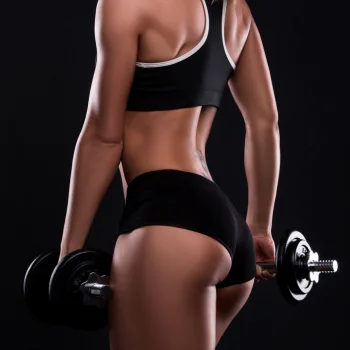
For optimal results, it is generally recommended to engage in glute exercises 2 to 3 times per week.
This frequency allows for sufficient stimulus to promote muscle growth and strength while providing adequate rest and recovery between workouts.
Moreover, these exercises cater to individuals of all fitness levels, from beginners to advanced athletes, and can be performed in a variety of settings, whether at the gym, in the comfort of your home, or even outdoors.
Expert Tips To Maximize Glute Exercises
As a fitness trainer, I highly recommend ramping up the intensity, resistance, or difficulty gradually in your glute exercises. This keeps your glutes challenged, fostering steady progress.
Consistency and sticking to proper form are key for optimal results. It's important to pay attention to your body, start slowly, and reach out to a fitness professional if needed, especially when beginning a new exercise program.
FAQs
Can You Lift Your Butt With Exercise?
Yes, you can lift your butt with exercises that focus on the gluteus maximus, gluteus medius, and gluteus minimus. Consistency, progressive overload, and proper form in your exercise routine, combined with a balanced diet, can contribute to achieving your desired results.
Is It Ok to Train Glutes Every Day?
No, training the glutes every day may not be the most optimal approach for muscle growth and recovery. When you exercise, you create microscopic damage to the muscle fibers, so the glutes, like any muscle group, need time to rest and recover in between workouts to allow for proper muscle repair and growth. Experts suggest that working out the glutes 2-3 times a week with proper rest in between can lead to better results without the risk of injury.
References:
- https://www.ncbi.nlm.nih.gov/books/NBK538193/
- https://www.ncbi.nlm.nih.gov/pmc/articles/PMC6805550/
- https://www.ncbi.nlm.nih.gov/books/NBK556144/
- https://www.ncbi.nlm.nih.gov/pmc/articles/PMC7039033/
About The Author
You May Also Like
